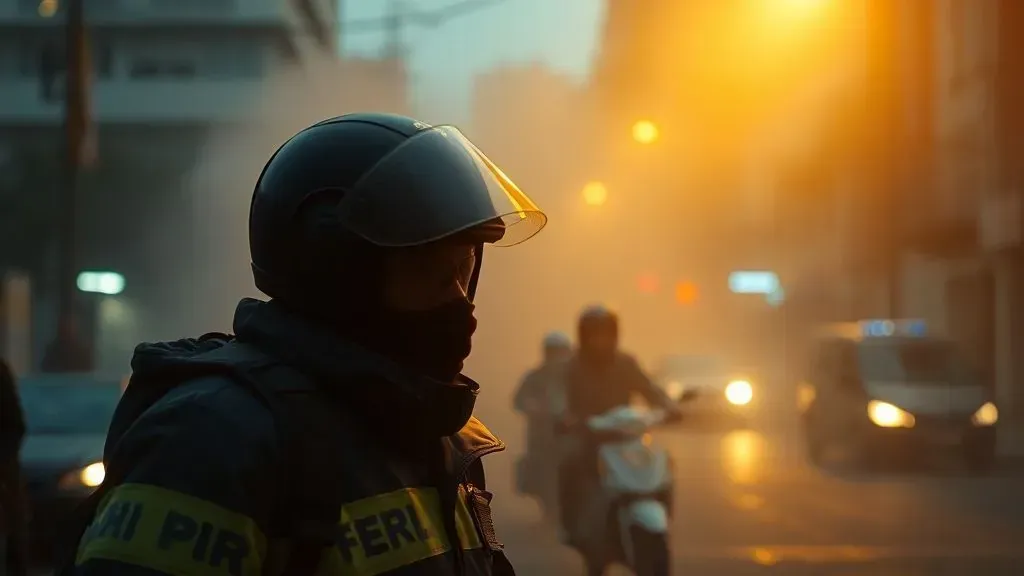
Extortion cases in Peru reached 18,000 this year, a 30% increase from last year, fueling widespread unrest. Homicides also rose to 1,690 from January to September, compared to 1,502 in the prior period. These trends highlight a deepening security crisis under recent administrations.
Background on Peru's Political Turmoil
Peru's political landscape has seen seven presidents in under a decade, reflecting chronic instability. The latest shift occurred when Congress impeached Dina Boluarte on October 10, 2025, over corruption and crime failures.
Jose Jeri, a 38-year-old lawyer, assumed the interim presidency on October 11. He pledged to prioritize crime reduction amid ongoing protests.
Triggers of the 2025 Protests
Protests erupted on September 13, 2025, initially against a pension reform mandating enrollment for adults over 18. Amid high informal employment rates exceeding 70%, demonstrators demanded repeal and government ouster.
The movement expanded to address corruption and organized crime, drawing Gen Z activists and transportation workers. Clashes intensified, with symbols like the Straw Hat Pirates' Jolly Roger appearing in rallies.
Escalation and Casualties
On October 15, thousands protested in Lima, chanting against Jeri and demanding his resignation. Violence erupted, resulting in one death—Eduardo Mauricio Ruiz Sanz, shot by police—and over 100 injuries.
According to Al Jazeera, the unrest included attacks on police, journalists, and protesters using stones and tear gas. The Defensoría reported 102 injuries by October 16.
Government's Response and Declaration
Jeri declared a 30-day state of emergency in Lima and Callao, effective from midnight on October 22, 2025. This allows military deployment alongside police to restore order.
In a televised address, Jeri stated,
We are moving from defense to offense in the fight against crime, a fight that will allow us to regain peace, tranquility, and the trust of millions of Peruvians.
According to CNN, this measure follows a similar failed attempt by Boluarte in March, which did little to reduce crime rates. Analysts question its long-term effectiveness.
Impact on Civil Rights
The emergency suspends key rights, including freedom of assembly and protest. Authorities can restrict movement and conduct searches without warrants.
Mariana Sanchez from Al Jazeera noted,
The state of emergency will lift constitutional rights and people will not be able to protest.
This could suppress dissent ahead of elections.
Public and Expert Reactions
Youth-led demonstrations have mobilized thousands across cities, frustrated by government inaction on crime. Transportation sectors, hit hard with 47 bus drivers killed in extortion attacks this year, joined the calls.
Sociologist Omar Coronel from Pontifical Catholic University explained the protests as a response to state dysfunction and corruption. His analysis underscores broader systemic failures.
Key Social Media Insights
Social media amplifies the unrest, with high-engagement posts highlighting the crisis.
Another perspective comes from official news accounts detailing the emergency's implications.
Economic and Social Ramifications
Rising crime hampers economic progress, affecting families and businesses through extortion and violence. The transportation shutdowns, like the Hudbay mineral mill blockade, disrupt supply chains.
Peru's informal economy exacerbates vulnerabilities, making reforms contentious. Stakeholders urge intelligence-focused strategies over repeated emergencies.
Historical Context of Instability
Peru has endured ongoing crises since 2016, with low approval for leaders and Congress. Boluarte's 2022-2023 protest crackdown drew international criticism.
Jeri's administration faces similar challenges, with allegations against him fueling demands for dissolution. Stability remains elusive until July 2026 elections.
Future Outlook and Recommendations
Experts recommend addressing root causes like corruption through transparent governance. Enhancing police training and intelligence could yield better results than military interventions.
Citizens should monitor rights during the emergency and engage in civic dialogues. Policymakers must prioritize sustainable security measures for lasting peace.
This state of emergency underscores Peru's urgent need for structural reforms to combat crime and restore public trust. Its relevance lies in highlighting how political instability perpetuates cycles of protest and repression, offering lessons for global observers on governance in crisis.



